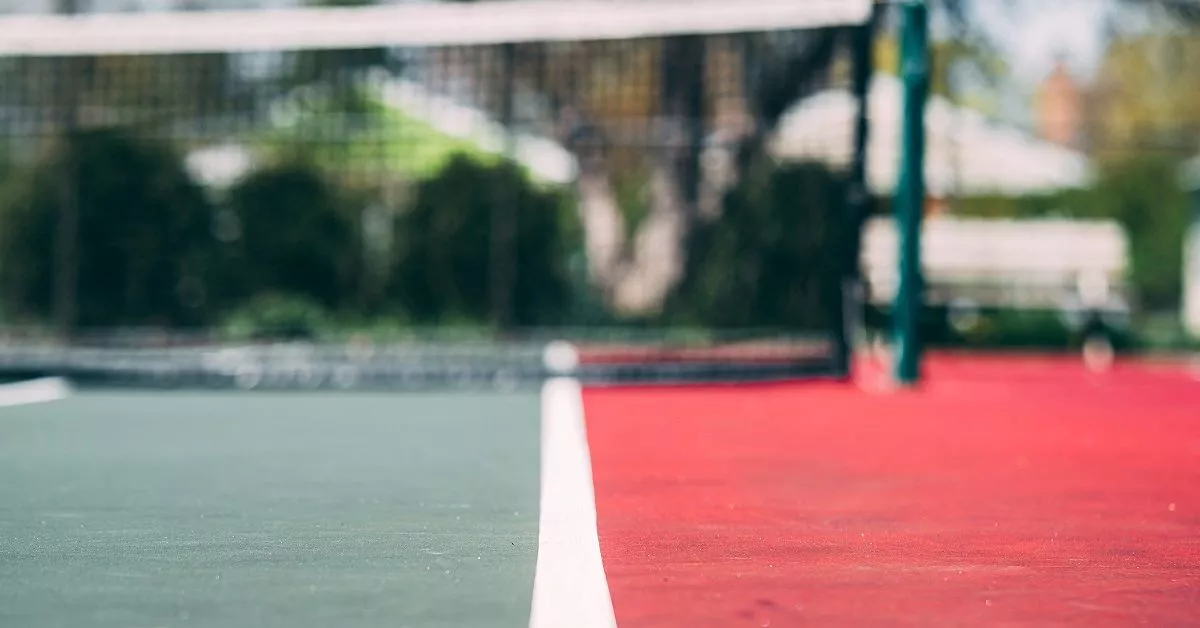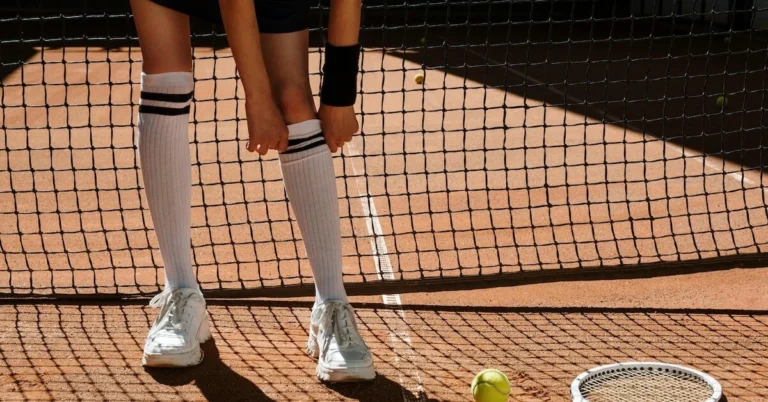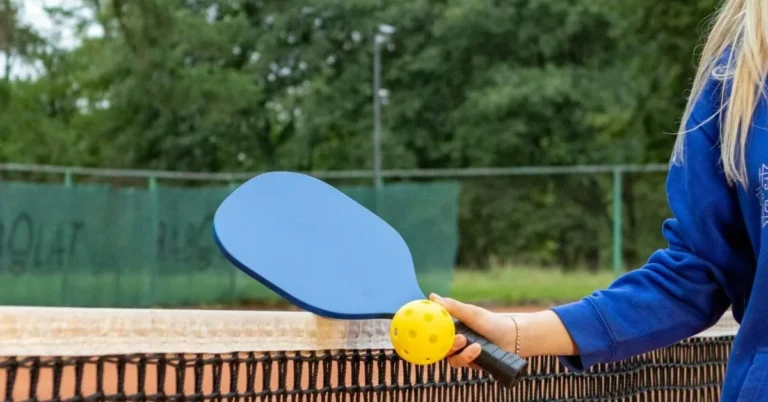As a tennis player, it’s important to know the names of the lines on the court. Understanding the purpose of each line can help you improve your game and avoid making mistakes during a match. In this article, I will provide a comprehensive guide to the names of tennis court lines, including their purpose and how they affect gameplay.
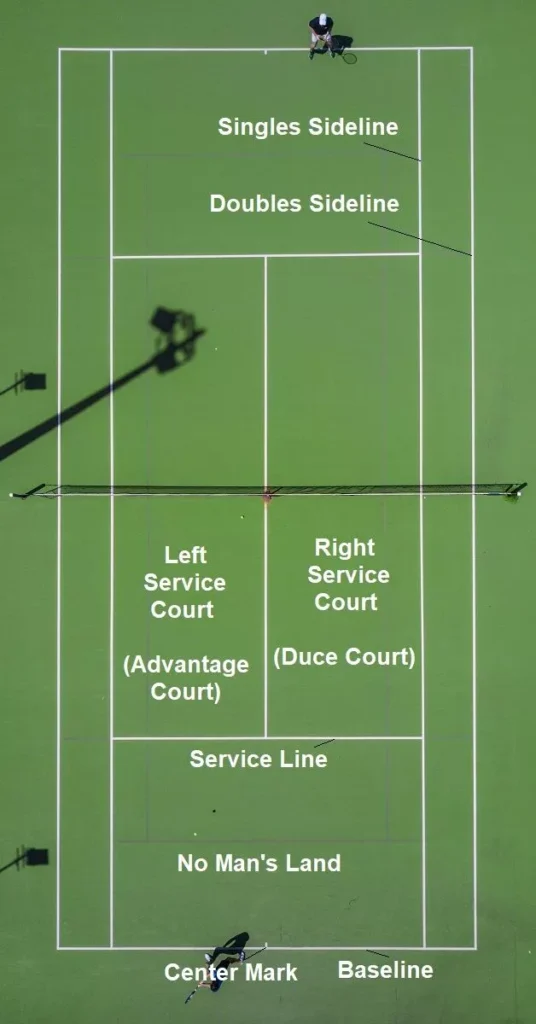
Names of Tennis Court Lines: Basics of Tennis Court Lines
Here are the four main lines that make up the court:
Baseline
The baseline is the line that runs parallel to the net and marks the furthest point in the court. It’s also known as the back boundary line. When serving, I must stand behind the baseline and hit the ball into the opponent’s service box. The baseline is considered to be “in” when the ball lands on or inside the line.
Service Line
The service line is a line that runs parallel to the net and is located 21 feet from the net. It marks the end of the service boxes and the beginning of the rest of the court. When serving, I must hit the ball into the opponent’s service box, which is located between the net and the service line. The service line is considered to be “out” when the ball lands on or outside the line.
Centre Mark
The centre mark is a small line that runs perpendicular to the net and divides the court into two equal halves. It is located on the baseline and is used to mark the centre of the court. The centre mark is often used as a reference point for players during a match.
Centre Service Line
The centre service line is a line that runs perpendicular to the net and is located in the middle of the court. It divides the service boxes into two equal halves and is used to mark the centre of the service boxes. When serving, I must stand behind the baseline and between the centre service line and the singles sideline.
By understanding the different lines on a tennis court, I can better navigate the court and make strategic shots during a match.
Names of Tennis Court Lines: Understanding Tennis Court Dimensions
It is essential to understand the dimensions of the court you are playing on. Here are the key dimensions to keep in mind:
Length of Baseline
The baseline is 78 feet (23.77 meters) long for doubles play and 78 feet (23.77 meters) long for singles play. The baseline is an essential part of the court and is used to determine whether a ball is in or out of play.
Width of Service Line
The service line is 27 feet (8.23 meters) long for singles play and 36 feet (10.97 meters) long for doubles play. The service line is used to determine whether a serve is legal or not.
Distance of Centre Mark
The centre mark is located at the midpoint of the baseline and is used to determine whether a ball has landed on the correct side of the court.
Length of Centre Service Line
The centre service line is 21 feet (6.4 meters) long and is used to determine whether a serve is legal or not.
By knowing the length of the baseline, width of the service line, distance of the centre mark, and length of the centre service line, players can better understand the rules of the game and make more accurate shots.
If you’re more of a visual person, you can watch a video about it. Click here.
Names of Tennis Court Lines: Significance of Tennis Court Lines
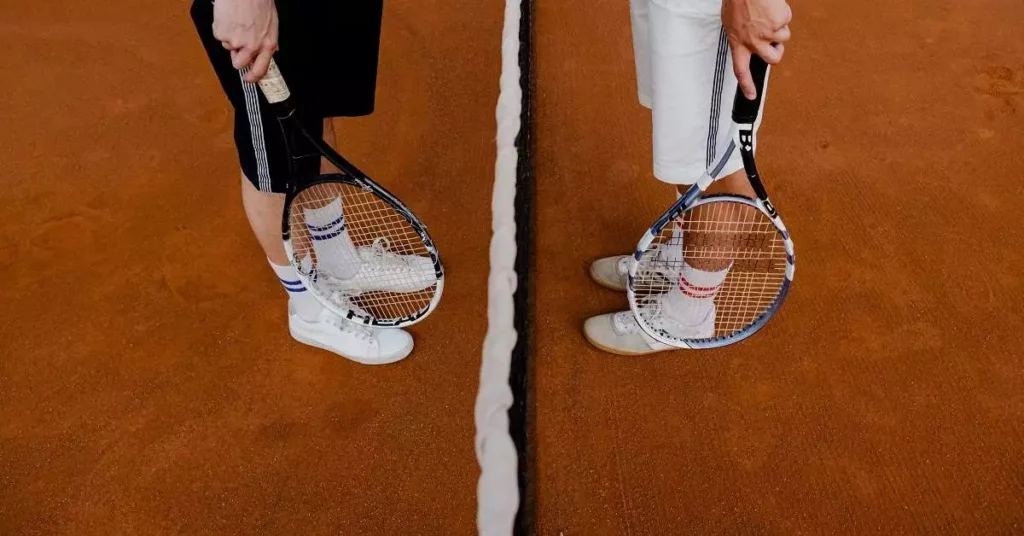
As a tennis player, understanding the significance of tennis court lines is essential. These lines serve a crucial purpose in defining the boundaries of the game and ensuring fair play. In this section, I will discuss the various roles that tennis court lines play in the game.
Role in Scoring
The lines on a tennis court play an important role in scoring. The baseline is the rearmost boundary of the court, and any ball that lands beyond it is considered out-of-bounds. The center mark on the baseline is used to determine the service area. The service area is divided into two parts, the deuce court and the ad court, by the center mark.
The singles sidelines mark the outermost boundaries of the court for a singles game. Any ball that lands beyond the singles sidelines is considered out-of-bounds. The doubles sidelines mark the limits of the court for a game of doubles. The court is extended to reflect the presence of two additional players.
Role in Player Movement
Tennis court lines also play a significant role in player movement. The sidelines mark the sides of the court and extend from the baseline to the net. During rallies, players must keep the ball within the sidelines. If the ball lands on the sideline, it is considered in, and the rally continues.
The service lines mark the end of the service area. The server must stand behind the service line and hit the ball into the opponent’s service area. The center service line divides the service area into two halves, and the server must hit the ball into the correct half of the opponent’s service area.
Role in Strategy
The lines on a tennis court can also be used to develop strategies. Players can use the sidelines to create angles and force their opponents to cover more ground. They can also use the service lines to hit serves to specific areas of the court and force their opponents to hit weaker returns.
In conclusion, understanding the significance of tennis court lines is crucial for any tennis player. From scoring to player movement to strategy, these lines play an essential role in the game.
Names of Tennis Court Lines: Types of Tennis Court Surfaces
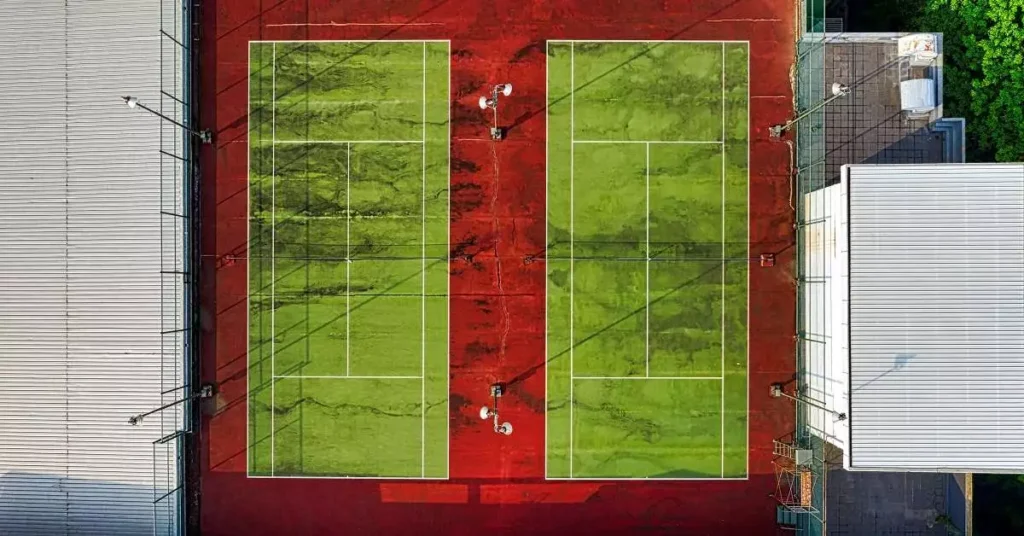
When it comes to tennis courts, there are three primary types of surfaces: grass, clay, and hard courts. Each surface has its own set of lines that are used to mark the boundaries of play.
Grass Court Lines
Grass courts are the most traditional type of tennis court, and they are known for their fast play. The lines on a grass court are typically white, and they are painted on the surface of the court.
Clay Court Lines
Clay courts are known for their slow play, and they are more forgiving on players’ bodies than other surfaces. The lines on a clay court are usually red, and they are made of a material that is similar to the surface of the court.
Hard Court Lines
Hard courts are the most common type of tennis court, and they are known for their medium-fast play. The lines on a hard court are typically white, and they are painted on the surface of the court.
Names of Tennis Court Lines: Maintenance of Tennis Court Lines
Maintaining the integrity of tennis court lines is essential for ensuring a fair and safe game. Here are some tips for keeping the lines in top condition.
Repainting Lines
Over time, tennis court lines can become faded or worn down, making them difficult to see. Repainting the lines is a simple and effective way to keep them looking sharp and visible.
When repainting, it’s important to use a high-quality paint that is specifically designed for tennis courts. This will ensure that the lines are durable and long-lasting. It’s also important to follow the manufacturer’s instructions for application and drying times.
Checking Line Integrity
In addition to repainting, it’s important to regularly check the integrity of the lines themselves. This means making sure that they are straight, even, and free from cracks or other damage.
One way to check the integrity of the lines is to walk along them, looking for any irregularities or inconsistencies. Another way is to use a straight edge or ruler to check the distance between the lines and ensure that they are evenly spaced.
If any damage or irregularities are found, it’s important to address them as soon as possible. This may involve patching cracks or replacing damaged sections of the line.
By following these tips for maintaining tennis court lines, you can ensure that your court is safe, fair, and enjoyable to play on.
FAQ
What is the name of the line on the outer side of a tennis court?
The line on the outer side of a tennis court is called the baseline. It serves as the rearmost boundary on the tennis court. Any ball that lands behind the baseline is considered out-of-bounds. However, a ball may land on the baseline and still be fair.
What is the name of the back line on a tennis court?
The back line on a tennis court is also called the baseline. It is the line at the farthest end of the court. It marks the boundary of the playing area.
What are the white lines on a tennis court called?
The white lines on a tennis court are called the service lines, center service line, singles sidelines, and doubles sidelines. Each line has its own purpose and significance.
Why are there two lines on a tennis court?
There are two lines on a tennis court to create two separate playing areas. The innermost lines are the singles sidelines, and the outermost lines are the doubles sidelines. The singles court is slightly narrower than the doubles court.
What are the sections of a tennis match?
A tennis match consists of sets, games, and points. A set is made up of a number of games, and a game is made up of a number of points. The player who wins the most sets wins the match. In professional tennis, men play best-of-five sets, while women play best-of-three sets.
Are you a tennis court owner? Have you recently repainted your tennis court lines? Share your experience and tips in the comments below and help others achieve a professional-looking court!

